In any talk about the world’s largest religious monument ever erected by humankind, it directs to the magnificent Angkor Wat Temple Cambodia. You might have not traveled to the kingdom country, yet you must likely hear about the massive wat on Cambodia’s national flag, which is an irreplaceable part of the priceless archaeological park. There have been numerous powerful adjectives used to describe Angkor Wat; some of the best ones are “marvelous, giant, unique, awe-inspiring, magnificent, etc., which are all true. Going thru the ups and downs of history, the monument is now described as a “Hindu-Buddhist” temple, preserving the ancient bas-reliefs, and representing classical Khmer architecture and art. In 1992, Angkor Wat was designated as a UNESCO World Heritage Site, making it one of the most famous heritage sites on the globe that attract generations of tourists, archaeologists, and visitors.
Almost all Cambodia tour packages include Angkor Wat Siem Reap in the highlight lists, and this technique works effectively in attracting Angkor admirers. Some travelers even believe that the trip to Cambodia cannot be complete without a visit to Angkor, but let’s clarify whether you just want to see Angkor Wat, or you’re interested in the entire Angkor Park. The Archaeological Park is home to several other remarkable temples beside the world-known Angkor Wat. In that sense, the Angkor Pass (1-day pass, 3-day pass, and 7-day pass) allows you to explore the temples inside the park, including the celebrated Angkor Wat – the biggest must-see on a site measuring 162.6 hectares. It’s admired for the grandeur and magnificence of the age-old Khmer architecture, numerous bas-reliefs, and devatas on the walls. Also, unlike the majority of Angkorian monuments, Angkor Wat was oriented to the west. Whether you will take an on-foot discovery of temples or ride your bicycle among the complexes, the experiences will be surprisingly pleasing.
Angkor Wat Temple History
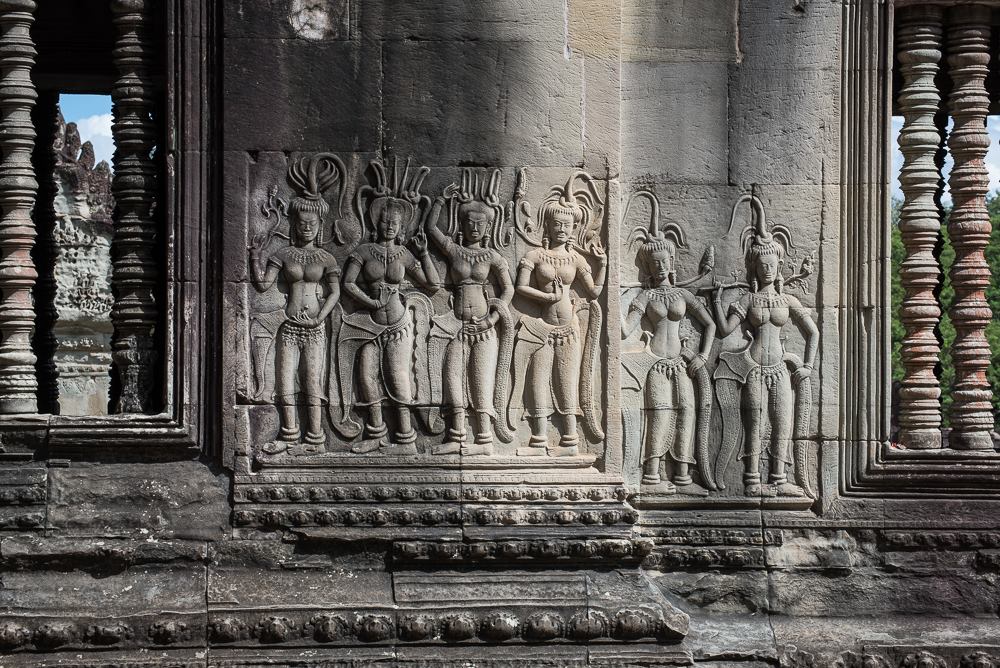
The monument was built under the command of King Suryavarman II in the early 12th century, as the King’s state temple and eventual mausoleum. Its construction needed a period of 28 years (from 1122 to 1150 CE) to complete. All the original religious motifs originated from Hinduism. Later, it was instead dedicated to Vishnu due to breaking from the Shaiva tradition of the preceding kings. After King Suryavarman II’s death, the construction seemed to end shortly, leaving several bas-reliefs unfinished. Under the reign of King Jayavarman VII, he established a new capital and state temple, which were Angkor Thom and the Bayon, dedicated to Buddhism. In that period, Angkor Wat was therefore converted into a Buddhist monument, leaving the Hindu sculptures to be replaced by Buddhist ones. By the end of the 12th century, the site became a Buddhist center of worship.
In 1586, Angkor Wat Temple was visited by some of the first Western visitors, who said it was so extraordinary that a pen could not describe it, and it was like no other building in the world. In the next few years till 1860, the site was effectively discovered and popularized in Western countries thru the publication of travel notes of the French naturalist and explorer Henri Mouhot. Later, in the 20th century, it was made known to a wider audience in Europe when the pavilion of Cambodia’s French protectorate recreated the life-size replica of Angkor Wat during Paris Colonial Exposition (in 1931). Cambodia won back independence from France in 1953 and took control over Angkor Wat since. In 1992, the site was nominated as UNESCO World Heritage Site and then went through difficult wartime. Nowadays, it is a national symbol of Cambodia and a great national pride of the Cambodians.
Where is Angkor Wat exactly?
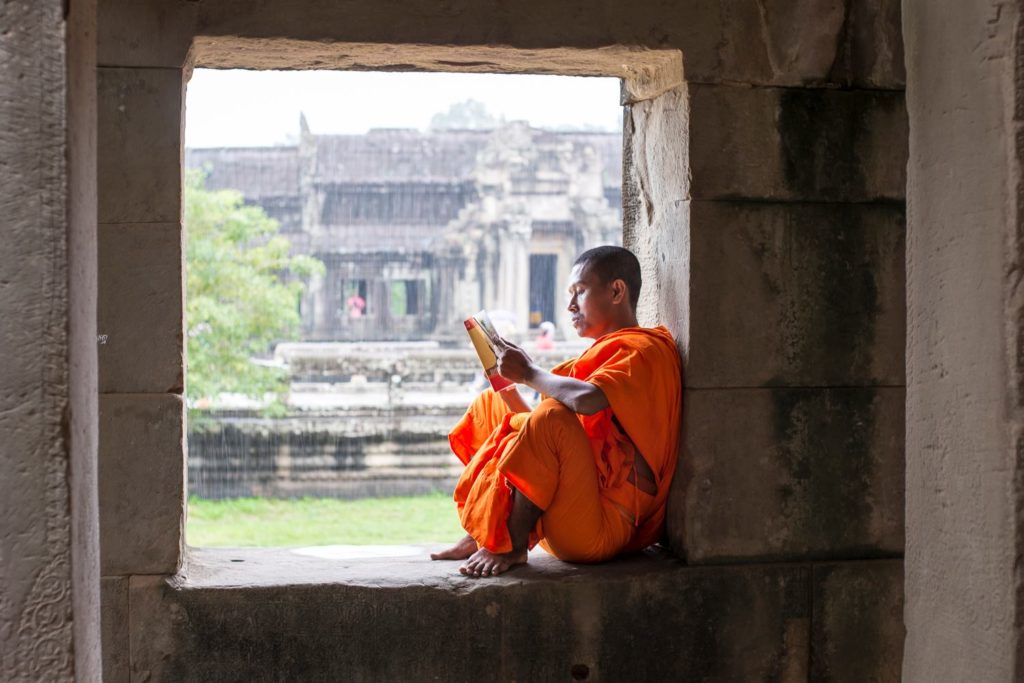
Geographically, Angkor Wat Temple is situated around 5.5km north of Siem Reap Province, northwest of Cambodia, and in the jungle-covered archaeological park of Angkor. It takes approximately 6 minutes to drive 5.5km from the city of Siem Reap to Angkor Wat. And, if you get started from Siem Reap International Airport, the distance is around 6km. To get there, the common options are taxis and the local tuk-tuk. Besides, a bicycle is a favorite means of transport. Nonetheless, for quick access to multiple temples and to avoid the scorching heat and dusk, hiring a tuk-tuk or a knowledgeable taxi driver is a good recommendation for the day. Otherwise, you can rent a motorbike or a bicycle to roam around the temples.
Discover more Angkor Temples in Siem Reap Cambodia
Somebody might misunderstand that Angkor Wat is a collective name of all temples in the archaeological park. Rather, Angkor Wat is the largest temple in the park which also includes other praiseworthy temples. Therefore, with the valid Angkor Pass, visitors can visit several temples during their entry into the park. For example, the 3-day Pass is valid for 5 entries during a period of 10 days, so you enter the park for a full discovery of various ancient sites. A handy list of the extraordinary temples in the complex will give you a much better idea of what to see when you get there and a surprising insight into its construction, history, and cultural relevance.
Angkor Thom

Being the last and most enduring capital city of the Khmer empire, Angkor Thom (aka the Great City) was constructed at the behest of King Jayavarman VII in the late 12th century. It has an area of 9 square kilometers, covering several monuments erected from earlier periods. In the center of the area is Jayavarman’s state temple named the Bayon, together with other significant masterpieces clustered around Victory Square. Going through years of being abandoned sometime before 1609, when a Western visitor wrote about it as “fantastic as the Atlantis of Plato,” then the uninhabited city became known. Its highlights are the large scale, immense use of laterite, face towers at each entrance to the city, the Naga-carrying giant figures, and age-old inscriptions. Notable sites in the city include Baphoun, Bayon, Phimeanakas, Terrace of the Elephants, Terrace of the Leper King, Mangalartha, Khleangs, South Gate Bridge, and North Gate.
Ta Prohm
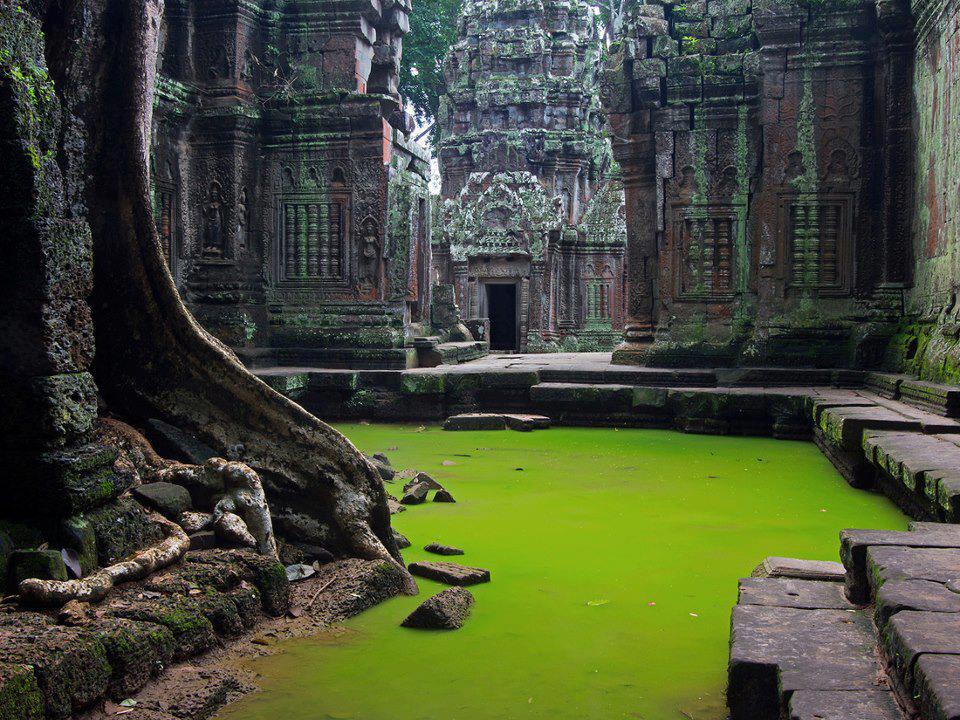
Ta Prohm was constructed in the late 12th and early 13th centuries, largely in the Bayon style, at the behest of King Jayavarman VII as a Mahayana Buddhist monastery and university. The site was set around 1km east of Angkor Thom and it was in a well-preserved condition as being hidden in a dense jungle. Once found, Ta Prohm had a photogenic and atmospheric status with trees growing out of the ruins and surrounding jungles. In 1992, Ta Prohm was designated a UNESCO World Heritage Site. Nowadays, this ancient monument keeps attracting visitors to admire its antiquity, mystery, narrative bas-reliefs, stone carvings, and especially the trees growing out of the ruins. There, you find the fig, banyan, and kapok trees spreading their gigantic roots over stones, walls, and terraces. With its mystical backdrop and ethereal aura, Ta Prohm was chosen as a location in the 2001 Hollywood “Tomb Raider” movie, which made it more known internationally.
Banteay Srey (Banteay Srei)
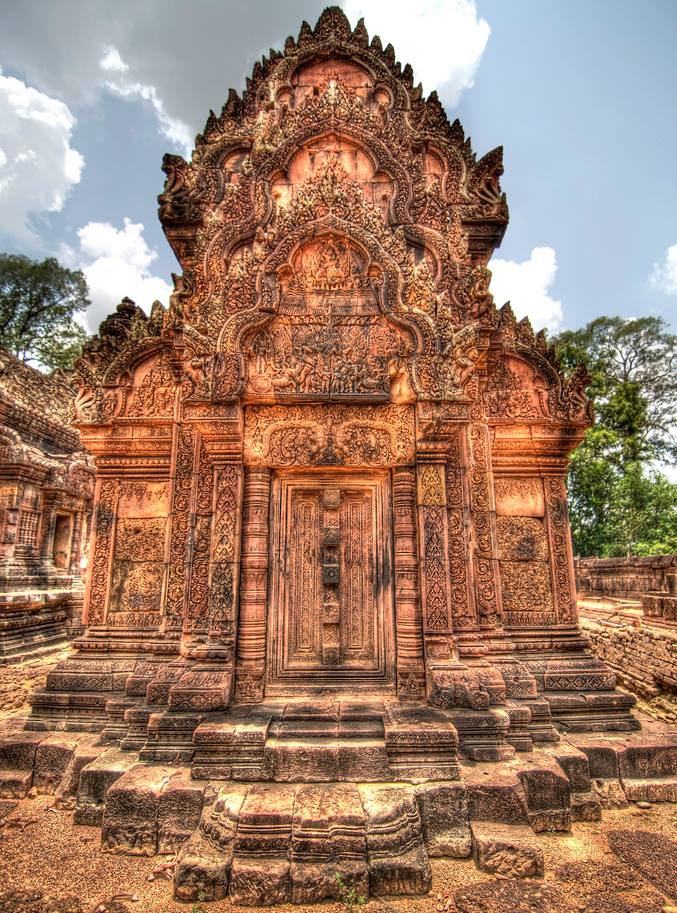
Banteay Srey is a 10th-century Khmer temple dedicated to the Hindu and Shiva. It was largely constructed from red sandstone, which was feasible for elaborate decorative carvings on the walls. The temple was miniature in scale when measured by Angkor construction standards, so it was unusual. It has been known by tourists who called it the “jewel of Khmer art and architecture.” The temple was also referred to as the Citadel of Women or the Citadel of Beauty as there found intricate bas-relief carvings on the walls and their tiny dimensions, which were beautiful. Generally, Banteay Srey is known for the intricacy of its carvings on the red sandstone walls, which seem to cover almost every surface of the site. Brick and laterite were only applied to the enclosure walls and several structural components.
Lolei
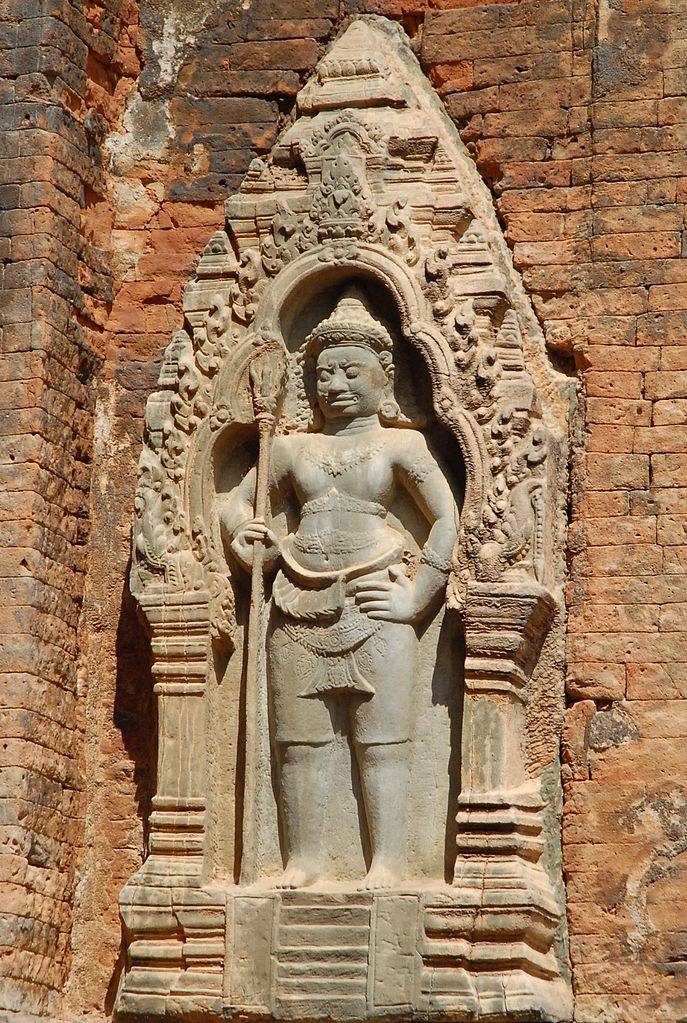
Included in a group of three late 9th-century Hindu temples of the Roluos group, Lolei is the northernmost and the last temple (other members are Preah Ko and Bakong). It was a part of the temples built for the city of Hariharalaya which once flourished during the reign of Khmer King Yasovarman I dedicated to Shiva. In the far past, the Lolei temple was situated on an island (which is now dry). There were myths that placing the temple on an island represented the mystical Mount Meru – home of the gods surrounded by oceans, according to Hindu mythology. Lolei comprised four brick temple towers grouped on a site, of which each tower was built for the King’s ancestors (his grandparents and parents). While the two front towers were for the males, the two towers at the back were for the females. The sandstone carvings at Lolei also made this temple special.
Preah Ko
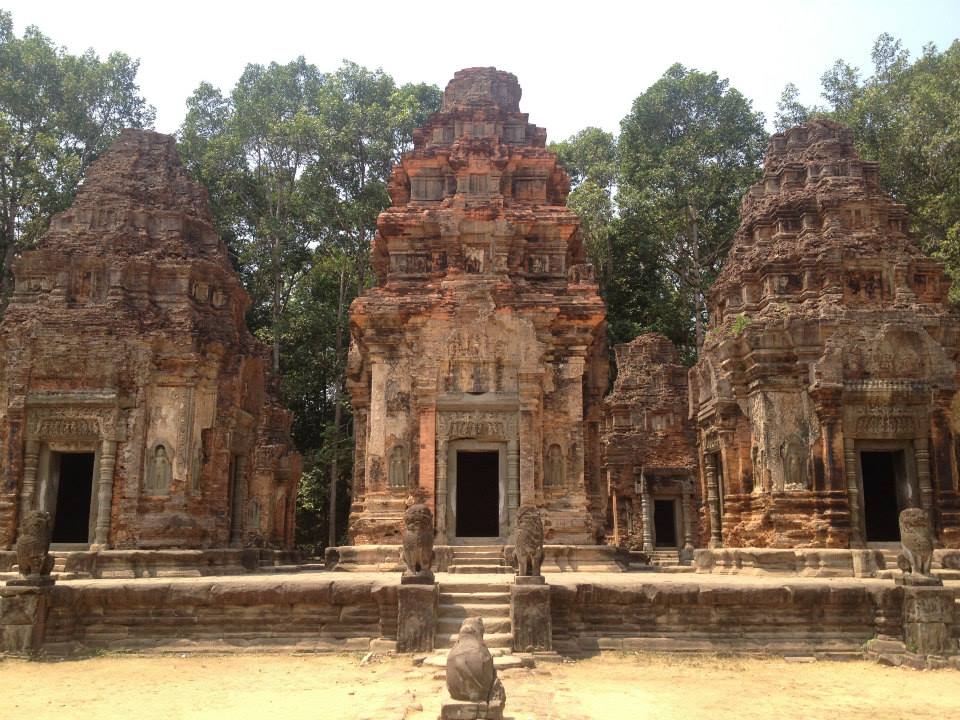
In the group of three Hindu temples of the Roluos group, Preah Ko is the first temple built. Its foundation could be dated back to the year 879 under the Khmer King Indravarman I, who made the site to honor his family. The temple had three sandstone statues representing Nandi, the white bull that served as the mount of Shiva. On a terrace, it consisted of six brick towers structured in two rows. The towers faced east and the front tower at the center was the tallest that was dedicated to Jayavarman II, the founder of the Khmer empire. The central towers featured images of the Hindu god Shiva. The visit to the cluster of temples will mostly take you to Preah Ko, in which you can marvel at the sandstone statues and many intricate carvings like warriors mounted on three-headed Nagas, horsemen, etc.
Bakong
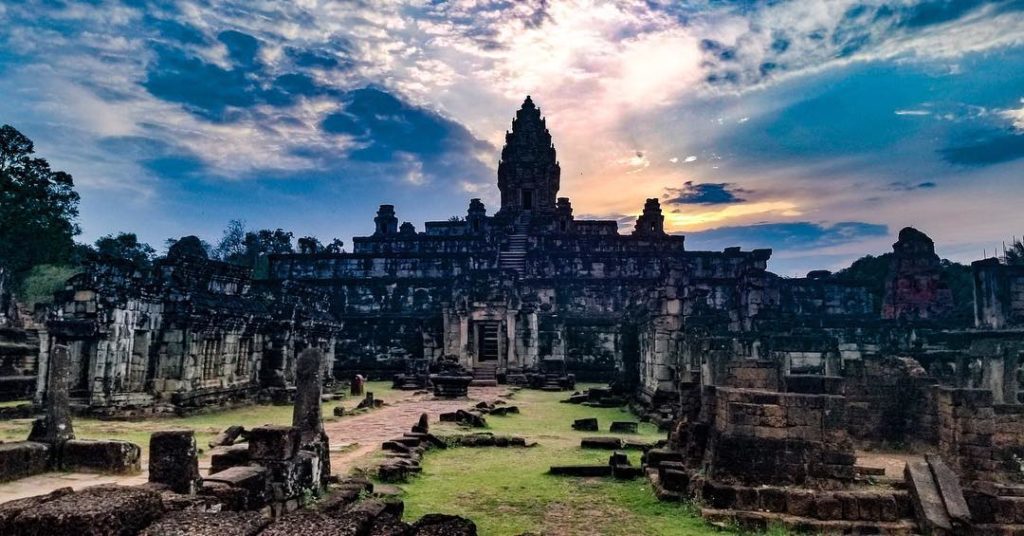
Bakong is the first Khmer temple-mountain made of sandstone at the behest of Khmer kings. Yet, it the last temple constructed in a cluster of the three 9-century Hindu temples of the Roluos group. It was originally served as the official state temple of King Indravarman I in the gone city of Hariharalaya. Its structure resembled the stepped pyramid, which was called the temple-mountain per the early Khmer temple architecture. The site of Bakong consisted of three concentric enclosures divided by two moats, and the main axis stretching from east to west. Between the two moats, there remained 22 satellite brick temples. What’s more, the central pyramid itself included 05 levels. It’s visible to meet stone statues of lions guarding the stairways while the statues of elephants guard the corners of the three lower levels of the central pyramid.
Prasat Kravan
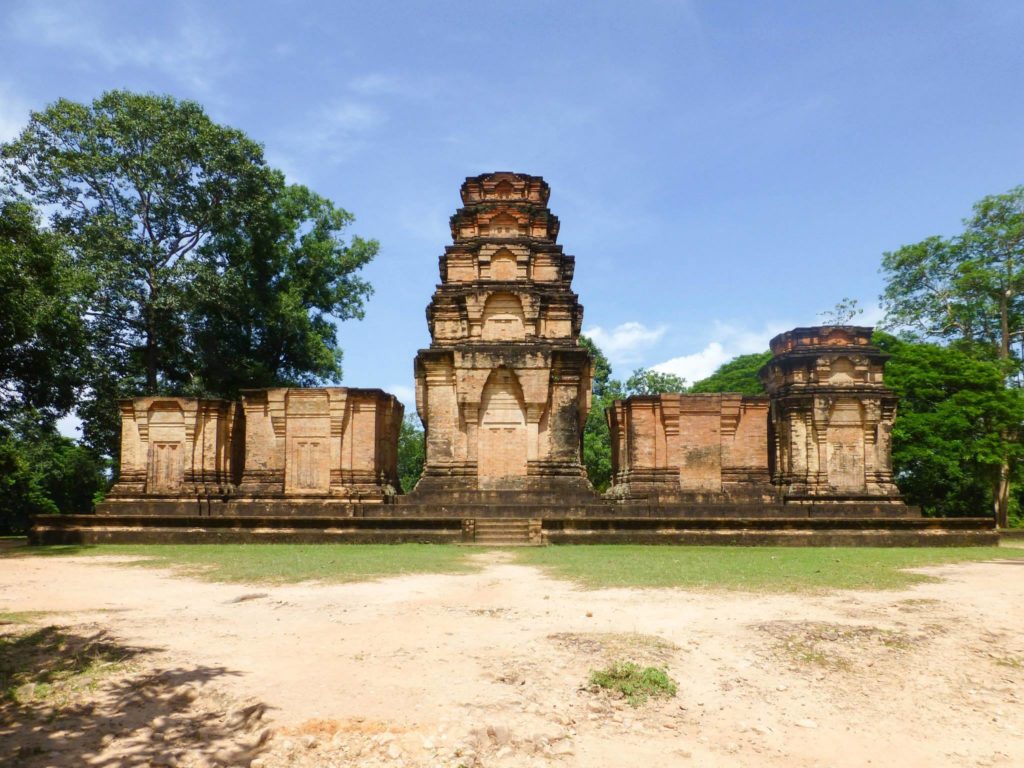
Dedicated to Vishnu in 921 CE, Prasat Kravan temple is a little 10th-century monument comprising five reddish brick towers on a terrace. The temple preserved inscriptions that told its history. After ups and downs, it has gone through restorations with some new bricks marked with a “CA” (Conservation Angkor). Prasat Kravan was oriented to the east and bordered by a small-scale moat. Its exterior structures reflected the super classical lines and symmetry while the interiors were noted for the immense bas-relief depictions of Vishnu and Lakshmi carved on the reddish brick walls. There remained the reliefs carved directly out of the brick walls in Prasat Kravan, which set the site remarkable. Also, the five brick towers look impressive from afar, which is also attractive for photography. Located in Angkor Archaeological Park, south of the artificial lake Srah Srang, the Prasat Kravan temple is an interesting monument to visit and learn about the early Angkorian architectural type.
Srah Srang Lake

Srah Sang is an artificial lake or reservoir at Angkor. It was also called the “Royal Baths of Angkor and its history could be dated back to the mid-10th century. Its foundation was by an initiative of a Buddhist minister. Then, around 1200, the lake was modified and added with the laterite landing stage, which has become a perfect venue for watching the sunrise over the Angkor monuments, especially the entrance of Banteay Kdei. So, right between Banteay Kdei and Pre Rup, guests will find an artificial lake and a pretty terrace highlighted with “naga” statues and guardian lions. As the body of water is east facing, it offers a spectacular sunrise view. Nowadays, you can also find clothing, souvenir vendors, and a couple of restaurants on the lakesides. Hence, if you would need a good place for breakfast or a lunch break, with a nice view, then Srah Srang is the right one.
Neak Pean
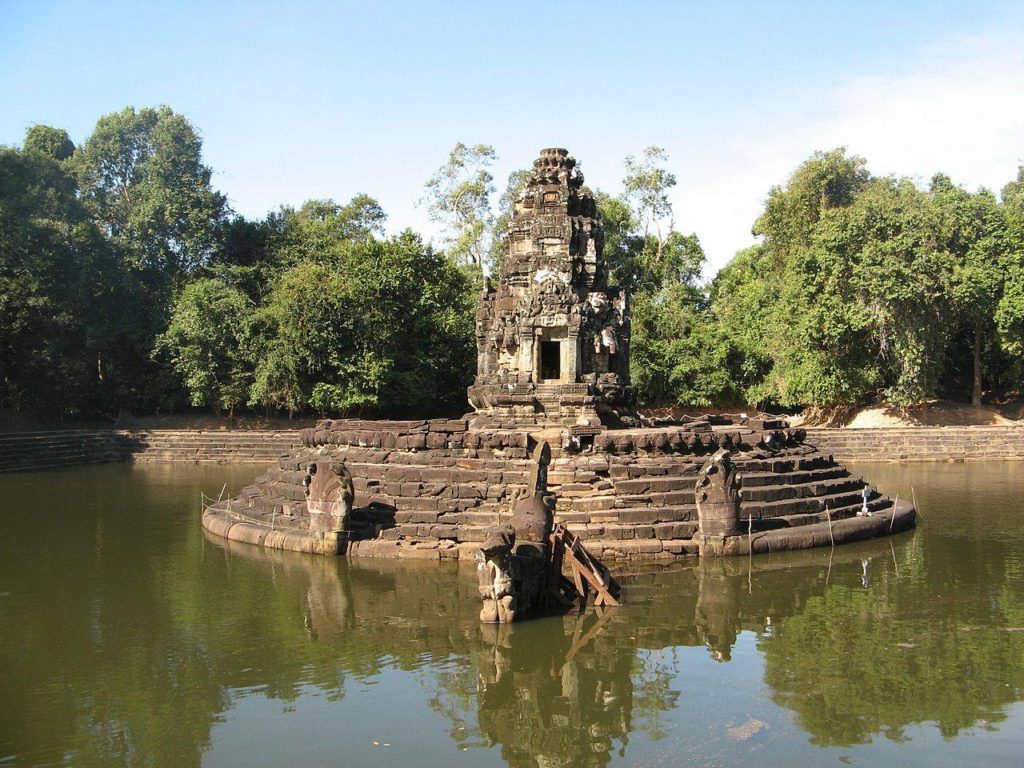
Neak Pean is an artificial island with a Buddhist temple in Angkor. It was constructed in the second half of the 12th century, under the reign of King Jayavarman VII, who was dedicated to Buddhism. It was also said that Neak Peak represented a mythical lake in the Himalayas, of which water could cure all diseases. Originally, this site was dedicated to medical purposes as the ancients thought that getting into the pool would help balance the body elements, thus treating all illnesses. So, it could be called one of the hospitals of the country at the period. The four connected pools were of Water, Earth, Fire, and Wind while the central pond is a replica of “Lake Anavatapta in the Himalayas”. The central temple on the lake looks mysterious, also. The green surrounding gives this place a fresh and serene ambiance.
Preah Khan
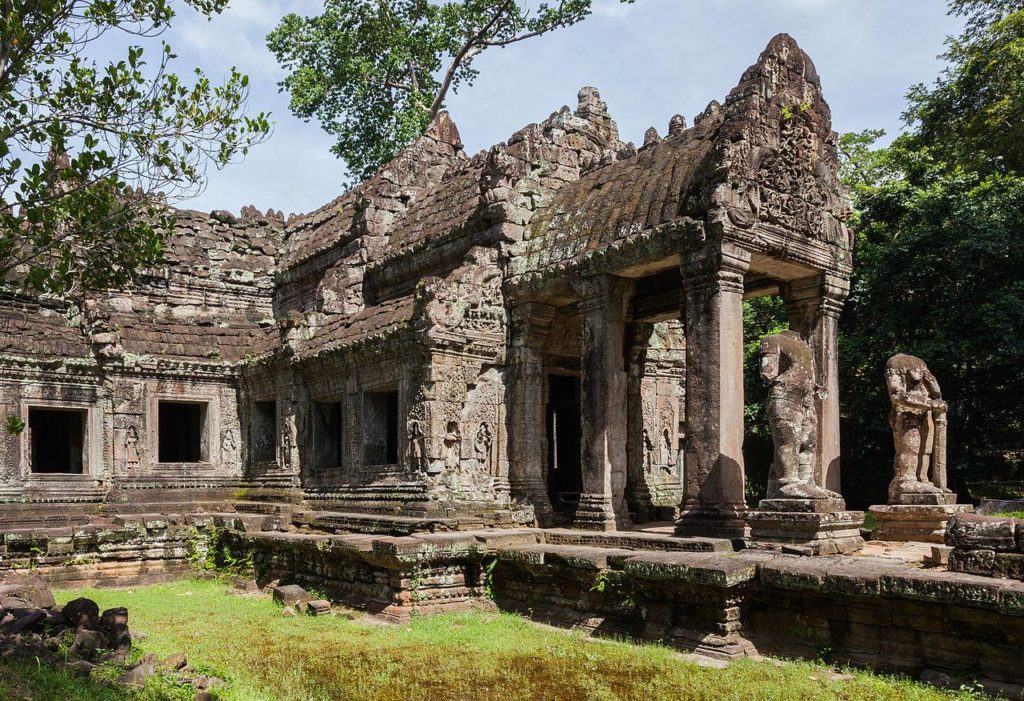
Preah Khan temple was constructed in the 12th century at the behest of King Jayavarman VII to honor his father in 1191. It had a flat design, including successive rectangular galleries around a Buddhist sanctuary combined with other Hindu satellite temples and various later additions. Left largely unrestored, the site of Preah Khan featured many ancient trees and vegetation growing among the ruins. After several attempts at restoration, it came to a conclusion to respect the ruined nature of the temple because going further would involve the originals too much. The complex is set at the northern edge of Angkor Park and in a dense jungle setting. Its boundary is defined by a moat and fortified walls decorated by carved stone “garudas” – eagle-like divine beings. Also, its highlights consist of entryways, towers, ceremonial areas, shrines, a two-story pavilion, the Hall of Dancer, and a variety of connecting corridors.
Angkor Wat Tours in Cambodia
Angkor Temple Tour 3 Days
Angkor Temple Tour 4 Days
While Angkor Wat Temple is the heart of the Angkor, the park preserves many other ancient monuments for you to discover in Cambodia, excitingly.

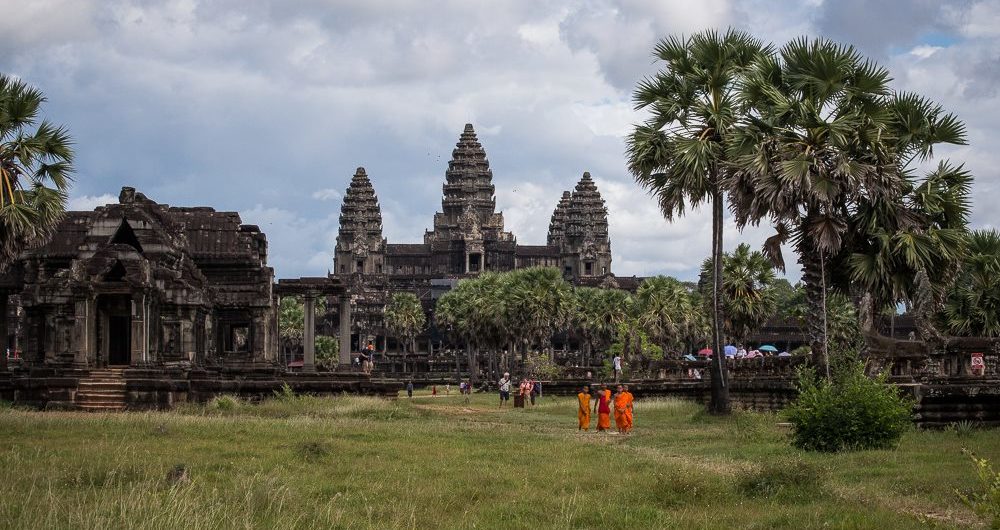
Comments